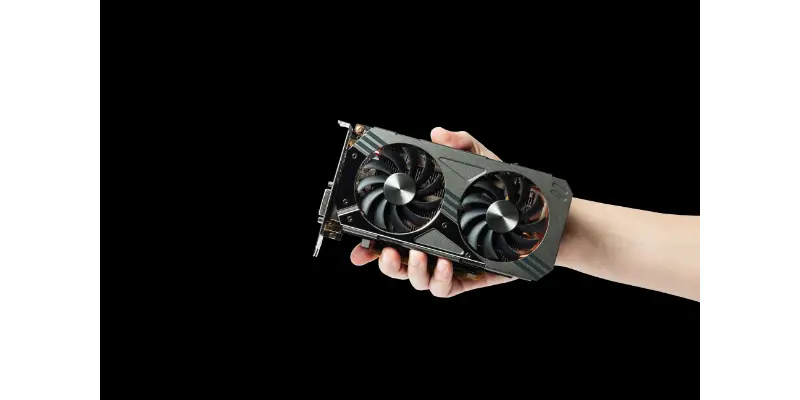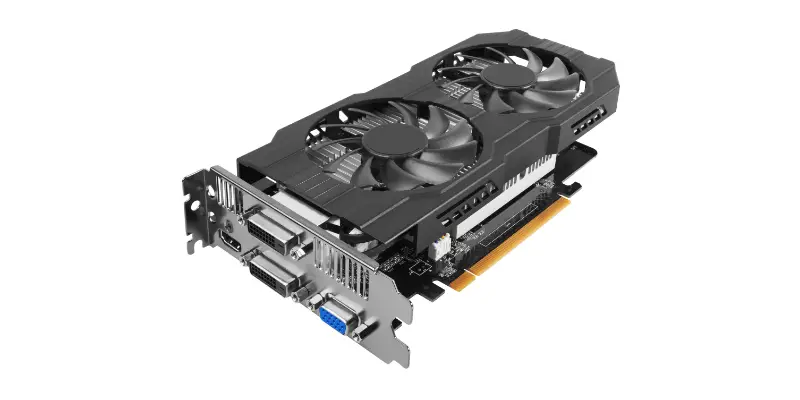Disclaimer: This post may contain affiliate links, meaning we get a small commission if you make a purchase through our links, at no cost to you. For more information, please visit our Disclaimer Page.
GPU drivers are essential software that ensures graphical tasks perform excellently on your computer. To keep them in top shape, you have to update them regularly. That being said, how do you update your GPU drivers?
You can update your GPU drivers either manually or automatically. The steps are slightly different depending on whether you use Windows or Mac. However, you should first identify the type of graphics card you use to determine where you will download the latest version of your GPU driver from.
While you must keep your GPU driver updated, it’s a rule of thumb only to do so when necessary. You don’t have to fix what’s not broken. Read below the importance of updating your GPU driver and how to go about it.
Table of Contents
Should you update GPU drivers?
Every computer has a GPU (Graphics Processing Unit). This unit is the part of your computer that controls graphics such as videos, animations, games, illustrations, etc., on the screen. It is incorporated into the graphics card in your computer’s Central Processing Unit.
Your computer’s GPU can either be discrete or integrated. If it’s discrete, it has its separate card; If it is integrated, it is incorporated into the CPU. You have to know the type of GPU your computer uses to know the kind of drivers you should install.
Your GPU enables your computer to render virtual reality and more advanced games. It also makes your computer capable of rendering graphical displays in two and three dimensions and high-definition forms.
However, the GPU needs a GPU driver to work efficiently. A GPU driver allows the programs on your computer and its operating system to use the graphics hardware. To get the best out of your computer’s graphics components, you need to update your graphics driver.
Not updating your GPU drivers slows down your computer’s performance during graphics-related tasks and causes problems that are potentially expensive to solve. If you notice that your computer’s graphics performance is below par, your GPU driver might be outdated.
To keep your computer in perfect working condition, you should update your GPU driver as and when due.
How Often Should You Update Your GPU Driver?
To keep your graphics card working properly, you should update your GPU drivers regularly. However, this shouldn’t happen every time. I would advise you not to fix what isn’t broken.
For instance, if you have no problem with your computer regarding graphic-intensive tasks, you need to update your drivers unless you want to access the latest innovations. If there is a problem, identify which exactly has the problem: your GPU driver or computer.
If your computer has a slow processing speed, updating your driver to access the latest innovations won’t magically eliminate the slow speed. Besides, updating your drivers from one version to another only includes minor performance effects or bug fixes most times. If everything works perfectly on your computer, you can bypass the updates until there is a need for them.
However, if you want to squeeze out every bit of your computer’s performance, you can always keep your GPU driver updated. You can also switch from your computer’s built-in driver to a better one during the updates. Doing this makes a lot of difference when doing graphic-intensive tasks on your system.
When updating your GPU driver, ensure you select the actual drivers. The actual drivers have more features that will enhance your computer’s graphical performance than generic drivers. Try to pick the real drivers manually instead of relying on automatic updates.
Also, you can always check if the latest versions of your GPU driver are available. You can join online forums to know when the latest versions are available. You can also check the properties of the driver in your computer’s device manager.
I recommend updating your GPU driver every two or three months if your computer doesn’t give you any problem. However, once your computer starts crashing, or your graphics-intensive tasks aren’t running smoothly, you should update your GPU driver immediately.
If the manufacturer gives specific instructions on updating your GPU driver, you should follow that too.
What Does Updating Your GPU Driver Do?
Your GPU drivers are important software that enables every graphic-intensive task on your computer to run smoothly, whether you are playing video games, editing visuals, etc. In short, it boosts the performance of your computer’s graphics hardware and eliminates all forms of lagging. Sometimes, updated GPU drivers provide you new features for free.
You can utilize the innovations to make your graphics-intensive tasks easier and more advanced. If you are a games lover, an updated GPU driver increases your computer’s gaming capacity and enhances the gaming experience.
If you use high-end 3D software on your computer or watch many high-definition movies without an updated GPU driver, you won’t enjoy your work or the movies. The graphical quality will be deficient compared to what you’re expecting.
Also, an updated GPU driver reduces the workload of the CPU. Usually, the CPU is responsible for every graphical processing on your computer. However, this increases the CPU’s workload, which in turn hinders your computer’s performance.
Another reason why you should update your GPU drivers is to fix bugs. Bugs are errors in applications or software that cause your computer to malfunction or crash altogether. If there are bugs in your graphic drivers, your graphics-intensive tasks won’t run smoothly.
As such, software developers and programmers update their applications regularly to prevent bugs. If your computer randomly crashes, its screen flickers while you’re gaming, or you always have error messages whenever you want to launch applications, a bug has infiltrated your GPU drivers. You’ve to update your GPU drivers if you’re going to fix the bugs.
Updating your GPU driver also relieves your computer’s memory of some stress. For instance, your graphics-intensive tasks are stored in your Random Access Memory, which may cause your laptop to start hanging if the functions are more than your RAM capacity.
Besides, your graphics card’s memory is faster than your computer’s memory, which, in turn, makes your work easier.
How to Update GPU Drivers
Updating your GPU drivers can be a headache if you don’t know how to go about it. But if you do, it’s less stressful. You can update your GPU driver either manually or automatically.
The first step to updating your GPU driver is to identify your graphics card. You can navigate the system information on your computer to get information about your graphics card and more third-party system utilities. The display category shows the type of graphics card that is on your computer.
Your graphics card determines whether you can download the updated GPU driver from the manufacturer’s website or the graphics driver software’s website. It takes time for your graphics driver to be updated automatically. I would advise that you update the driver manually to save time and minimize the chances of correcting the wrong drivers.
To update your GPU driver using Windows Update, navigate to Settings on your PC and click on Update & Security. Click on Windows Update and see if the Check for Updates button is available. If it is, click on it.
If it isn’t, click on the View Optional Updates option. In the Driver Updates option, select the driver you want to update there. After downloading and installing it, the new version of your driver will automatically be available on your computer.
However, if you’re updating your drivers using Windows Update, the View Optional Updates may not be available all the time. If it isn’t, that means no updates are available then.
You can also update your GPU driver using the device manager. If the latest version isn’t available in the Windows Update, you can navigate the manufacturer’s website to check the recent versions. However, before you download the newest version from the manufacturer’s website, you should read the instructions first.
Launch the Start menu on your computer and search for the device manager. Double-click the section that has the tool you want to update. Then, right-click on the tool and navigate to the Update Driver option.
In this option, click the Browse tab. Search for the driver files and launch them. Ensure you read instructions on how to update the driver before you do it.
Another way to update your GPU driver is to find your way to the graphics control panel of the software brand you’re using and download and install the latest version. Once you download the newest version of the software, you can easily install the latest GPU driver in the driver’s section.
Either you download and install your updated GPU driver manually or automatically, you have to confirm if you downloaded the correct version. To see the version you downloaded, launch the Start menu on your computer and click on Device Manager. Click on the hardware you updated and click on the properties section.
Select the Driver tab and check if the date and version match the details on the manufacturer’s website. If the information does, then you’ve downloaded the correct version. If it doesn’t, you have to uninstall the version you’ve downloaded and repeat the steps to download the correct one.
If you’re using a Mac, the steps outlined above may not apply to you. To update your graphic driver on a Macbook, click on the Apple menu in the upper left corner of your Mac’s screen. Select the Software Update option.
Click on the Updates tab, and your screen will display all available updates. Click on the tools you want to update. If your screen doesn’t show the updates, that means your graphics driver is up-to-date, or there are no available updates.
How to Choose the Best GPU Driver
The capacity of your GPU driver determines how efficient your graphics-intensive tasks will run on your computer. As such, you have to ensure you download and install GPU drivers that adequately meet all of your graphics needs.
Before installing any GPU driver, identify the core function you need it to perform. For instance, if you want an enhanced gaming experience on your computer, you have to choose a GPU driver that provides an optimal gaming experience. If you’re into video editing or use high-end 3D applications, you need a reliable GPU driver that offers the best range of options for creators and developers.
Also, ensure that the GPU driver is compatible with your computer’s model. An incompatible driver won’t work well on your computer even if it gets downloaded and installed. You can check your manufacturer’s website for more information on the type of compatible drivers with your computer.
Reading third-party reviews helps a lot too. Before you download and install a GPU driver you’ve not used before, you can read what other people say about it. This will help you make the right decision and save you from wasting your money and time.
After you’ve downloaded and installed the GPU driver of your choice, ensure you regularly update it to prevent bugs. If you’ve any issue with your driver, check if you downloaded the right one. If you did, close all applications on your computer and reboot it.
If the problem persists, escalate it to your manufacturer’s support website if you downloaded the driver from there or the driver software’s brand. You can also update your driver to the latest version.
Conclusion
Updating your GPU driver is less stressful when you know the right driver to install and the steps to follow, depending on the type of computer you use. However, it is essential to note that updated GPU drivers don’t affect your computer’s overall performance. If you need more information about your driver, you can always reach out to the manufacturer.


